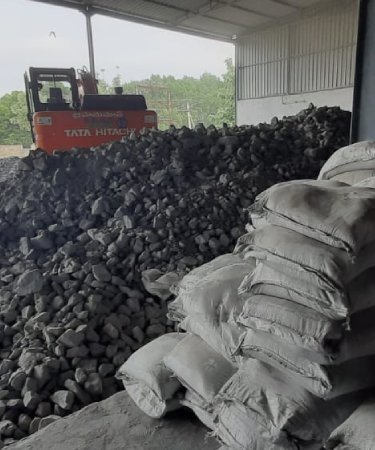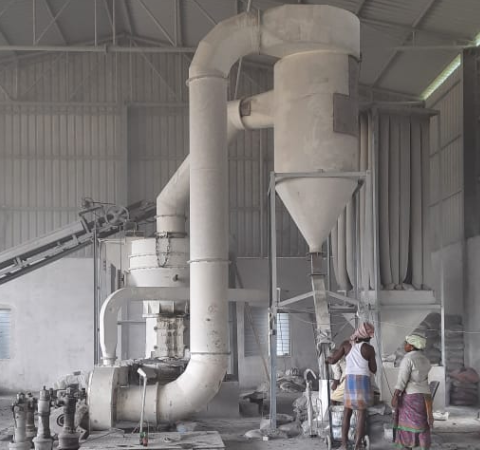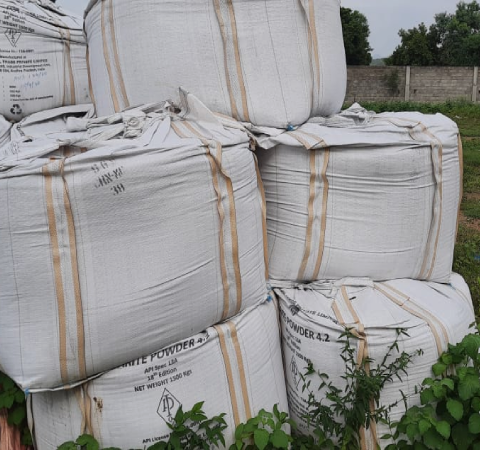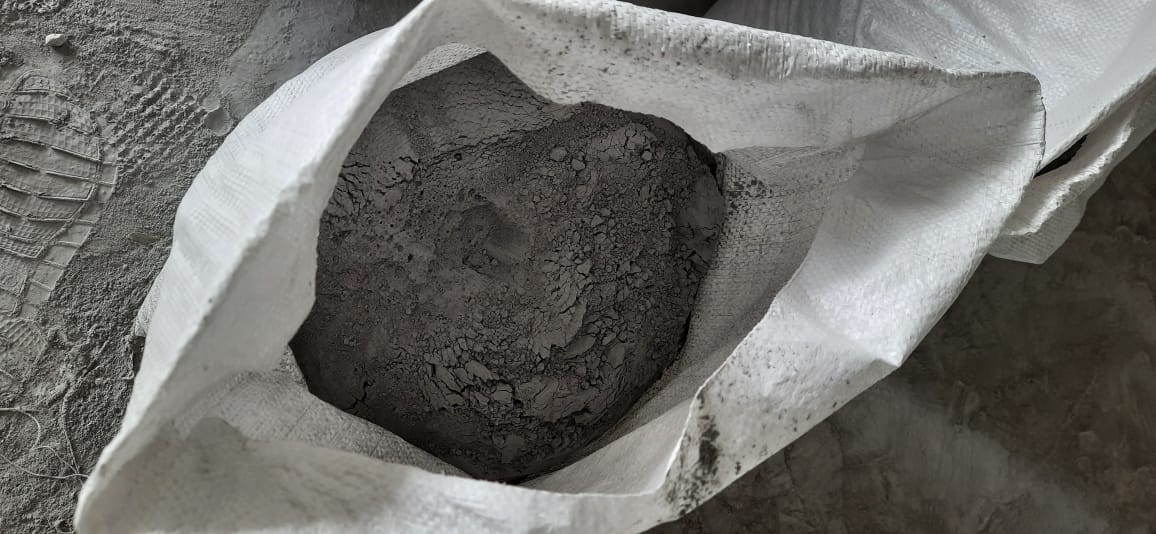About Limestone
Limestone is a kind of sedimentary rock composed mainly of calcium carbonate in the form of calcite minerals. (Sedimentation is the process of suspending particles getting settled down under the effect of gravity.)
The chief component of Limestone is Calcite, a calcium carbonate mineral. Apart from Calcite, Limestone contains other minerals, including Quartz, feldspar, pyrite, siderite, and clay minerals. Moreover, Limestone includes almost 10% of all rocks. Bedded type sedimentary Limestone is used in industries that require Limestone in bulk quantity. Moreover, 50% of Limestone is calcium carbonate. The types of Limestone differ and depend upon the formation, appearance, and composition.

Limestone Formation
According to geological perspective, Limestone forms in clear, warm, and shallow marine waters. The formation also takes place in water evaporating environments that result in cave formation.
The formation of Limestone is conventionally found in two different environments.
- Biogenic precipitation from seawater: lime secreting organisms and foraminifera.
- Deposition of preexisting Limestone: Travertine, tufa, caliche, chalk sparite, and micrite.
Organic Limestone
In the marine ecosystem, when fossils of the dead animals get accumulated as sediment, their shell and skeletal waste get accumulated as sediment and forms into Limestone.
Inorganic Limestone
Here, the formation of Limestone takes place by direct precipitation of calcium carbonate. When calcium carbonate gets precipitated directly from the solution, it forms as cement and binds the biological grains.
Cave Limestone
The formation of Limestone also takes place during evaporation. When water droplets seep down through the fractures and pores in the cave ceiling, the water evaporates, and the dissolved calcium carbonate deposits on it. Over time, this evaporation process leads to the formation of icicle-shaped Limestone.
LIMESTONE EXTRACTION PROCESS
Limestone is extracted by means of blasting or mechanical excavation.
The extracted ore is transported for the crushing process.
Once it is crushed, it will be stored in different fractions for screening.
The end product will be Limestone.
Forms Of Limestone

Chalk
Chalk is a fine-grained and light-colored Limestone formed by the sediments of skeletons of marine organisms. It is soft and can be cracked easily. Earlier, natural chalk was used to write on blackboards. But now, the chalk we use for blackboard is man-made, and some of it is made from natural chalk additives.
Coquina
Coquina is a poorly consolidated Limestone that is mainly composed of sand-size fragments of calcareous shell. A little calcareous cement binds the grains together so that they will be cemented poorly. It is ideal for home decoration.
Travertine
Travertine is a chemical formation of Limestone resulting from the evaporation on the roof of caves – stalactites.
Travertine can be recognized by its porous texture and low hardness (3Mohs) and was widely used in architecture.
Tufa
Tufa is a porous Limestone produced by the precipitation of calcium carbonate. It is a combination of biological and chemical processes that takes place near the waterfalls.
Fossiliferous Limestone
The main ingredient of fossiliferous Limestone is fossils. It can be further divided into microscopic and macroscopic fossiliferous stones. Macroscopic fossiliferous stones include Gastropods, brachiopods, crinoids, and hard-shelled mollusca. In contrast, the microscopic fossiliferous stones include diatoms and single-celled organisms.
Lithographic Limestone
It is a fine-grained and homogeneous rock that is so hard and impenetrable. In the early days of the printing industry, it was used for painting incredible images.
Oolitic Limestone
As the name signifies, the Oolitic Limestone resembles the shape of an egg. The granules imitate small eggs. The formation of Oolitic Limestone takes place due to the accumulation of calcium carbonate layers around sand grains. It is extensively used in construction industries.
Where Is It Found?
Limestone deposits can be found in the shallow waters in the Caribbean Sea, Indian Ocean, Persian Gulf, Gulf of Mexico, within the Indonesian archipelago, and around Pacific Ocean islands.
The abundance of corals, algae, mollusca, fishes, diatoms, and other calcium-rich marine organisms lead to the formation of Limestone.
The deposits of Limestone vary according to the place they occur. In lakes, the formation of Limestone can be referred to as stagnant deposits. In seas, it is referred to as deep-sea deposits. If Limestone is deposited in springs, rivers, or underground water, it is referred to as freshwater or streaming deposits. If it is deposited in meteoric caves, it is referred to as evaporative or vapor-based deposits.
Uses Of Limestone
Limestone is widely used in manufacturing Quicklime, slacked lime, portland cement, and mortar. Here are the applications of Limestone in various fields.

Applications Of Limestone
Travertine is widely in swimming pool construction. Its non-slip feature and heat resistance make it an ideal choice for coping and pool deck area building. As travertine is affordable when compared to other marbles, it is a good choice for pools.
For years, Limestone has been widely used to construct door sills, window sills, headers, and water tables.
Soil acidity can influence plant growth and can reduce crop production. When you spread agricultural lime onto the soil, acidic soil can be neutralized using the calcium components of Limestone's calcites. Thus, fragmented Limestone can be considered the best choice for conditioning soil. Limestone with 90% of calcium carbonate content can be used in the farming sector. It is crushed and differentiated into various grades according to its size and then used as agricultural limes.
In steel production, large amounts of Limestone and lime can be used to remove impurities during the iron ore reduction and steel production process.
Limestone's calcium oxide can act as a pH regulator while extracting gold from Quartz. While extracting gold from powdered Quartz, sodium cyanide solution is used. In this process, the pH level has to be maintained between 10-11 to prevent the production of deadly hydrogen cyanide gas. In that case, when you add calcium oxide to that solution, the pH can be maintained within the 10-11 range.
Limestone with calcium carbonate content above 95% can be considered high-grade Limestone. It is then quarried and crushed to different sizes. The crushed powder can be used as fillers in manufacturing paints, plastics, cleanser, paper, and carpets.
Limestone is cut into blocks of specific dimensions and used in the construction industries. It is used as facing stone, floor tiles, window sills, and stair treads.

